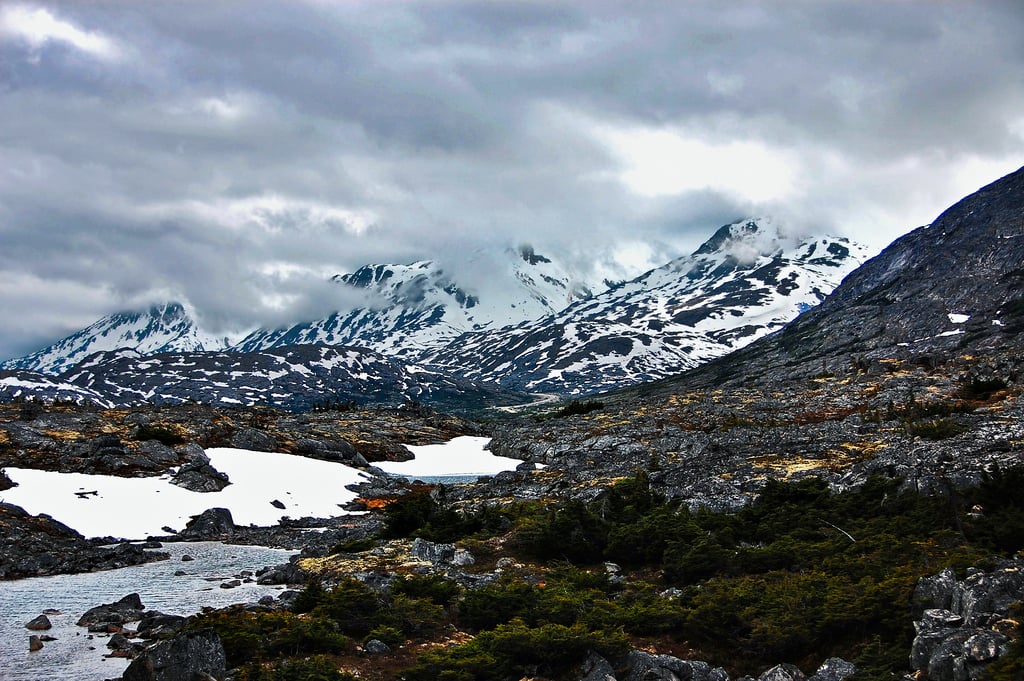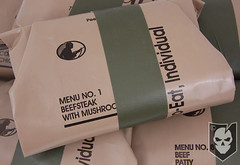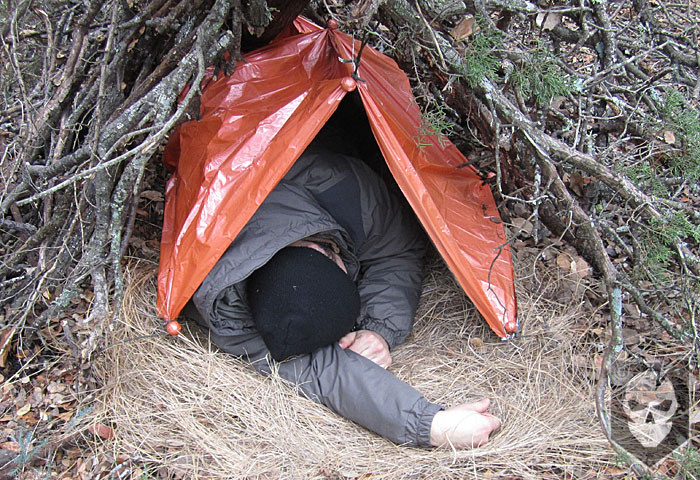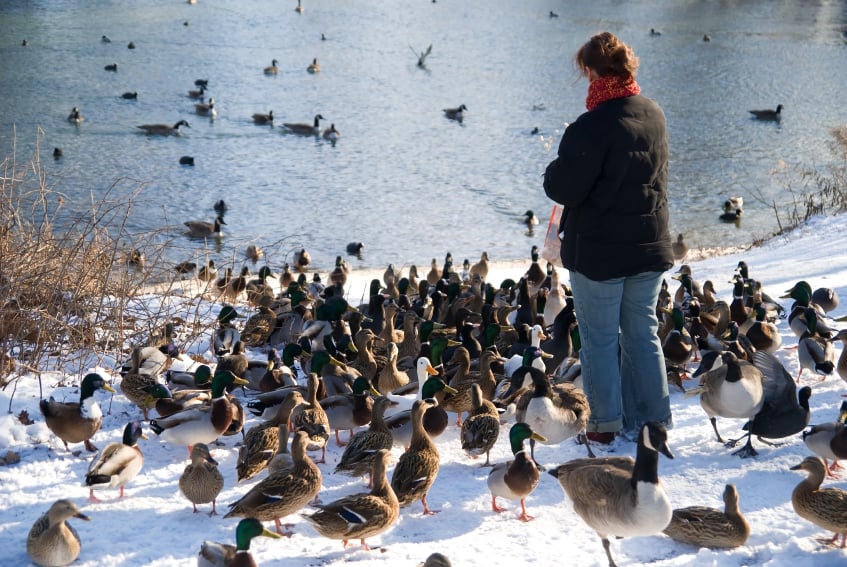Know your Winter Enemy: How to Battle the Elements and Win
It’s cold out there. During this time of year, people generally spend more time inside than out, which is understandable. Regular outdoor activities don’t sound nearly as appealing when it’s below freezing outside. While this is true for some in the ITS community, I know that the vast majority of you are spending time in the outdoors despite the chill. We are outdoor people by nature and the winter provides a great environment for fun and adventure.
Although winter sports and trails offer a fantastic escape from suburban reality, they also bring with them many dangers due to the elements. The cold is a very real threat, but it’s one that can be fought and beaten with solid education. It’s our responsibility to learn the dangers of the environment and how to overcome them. This comes by gaining a good foundation of knowledge that can be built upon with time and experience.
I’m reminded of the movie The Edge where a wealthy genius is given a book on surviving the wilderness days before his plane crashes, leaving him stranded in the wild. With the limited amount of knowledge he’d received from reading the book he was able to fight off predators, keep warm and eventually survive until rescued. Although this was a fictional tale, it does demonstrate the power of knowledge in a survival situation. Perhaps it’s best to view the cold wilderness as an enemy to overcome and we should show that enemy the respect it deserves by learning what we can, when we can.
Falling Temperature
When the temperature drops inside of your body, the effects immediately evident. The body has a natural defense against a loss in core temperature, such as peripheral vasoconstriction that could lead to cold diuresis and shivering, which can cause lactic acid to build up in the muscles. Below is a list of the symptoms associated with a drop in core temp:
- 98.6 °F – Normal operation
- 97.0 °F – Mental impairment; poor judgment
- 96.0 °F – Onset of shivering; increased metabolism
- 94.0 °F – Gross motor skill impairment leading to stumbling and increased shivering; no self protection
- 92.0 °F – Difficulty walking; severe shivering
- 90.0 °F – On ground with convulsive shivering
- 86.0 °F – Shivering stops; coma; curtains
I do have a deep appreciation for the cold and its powerful effect on the mind and body. In my past, I’ve seen enough to understand the danger of losing body heat. It was on Tuesday night of Hell Week when I was called out from the rest of the class and told that I needed to have my temperature taken, but they weren’t about to ask me to open my mouth and put a thermometer under my tongue. No, they had bigger and better plans for me. In Hell Week, they use a long thermometer that is inserted where the sun don’t shine with a “way too long” lead that takes the temperature of your vital organs, not your extremities. The instructor actually apologized to me before taking my temperature. I’ve always found that funny. I’m glad that this happened though, because I have a recorded 93 °F on record. Had this been taken under the tongue it would have appeared lower, but the core is what matters.
I remember how I felt that night and can honestly say that I have been colder in the Teams. I had the “opportunity” to dive a lot and sometimes this involved cold water. In the Pacific Northwest, I dove an exhaustion dive on mixed gas in 35 °F water that lasted, not kidding, almost ten hours. I know that sounds like an exaggeration, but it’s actually quite generous. I can’t get into the specifics, but I can say that I was wearing a 3-2-1 wetsuit under a 6.4 semi-dry suit. My dive buddy wore a bare dry suit because he didn’t require the dexterity I did for this training operation. By the end, neither of us could walk under our own power. With help though, we drove back to the dive shop and rewarmed in a hot tub for an hour. I’m not saying we needed the hour, but it did make the beer go down smoother. That was the coldest that I’ve ever been. Had we needed to rewarm ourselves on the beach without help, I don’t know what would have come of it.
Note: Wind and Wetness take away body heat faster than it can be produced.
Hypothermia
The state when the body core temperature falls to 95 °F or below. This is a life threatening, non-freezing, cold injury.
What causes Hypothermia?
- Ambient temperature
- Wind chill
- Wet or inadequate type or amount of clothing
- Water immersion
- Exhaustion
- Dehydration
- Injuries
- Poor nutrition
- Alcohol/nicotine
- Diarrhea
- Decrease in physical activity
Treatment
Prevent further heat loss by getting the person out of the elements. They’re a CPR risk and you should monitor ABC’s [Airway, Breathing and Circulation] constantly while observing and evaluating. Remove wet clothing and add external heat such as insulating clothing and sleeping bags. Wrap the person like a burrito in a vapor barrier and heat retention layer if possible. Feed them warm, sweet, high-calorie liquids.
Note: No one is DEAD until they are warm and DEAD.
Cold Injuries
Chilblains
This is a non-freezing injury that’s uncomfortable, but causes no impairment. Caused by repeated exposure of bare skin to wet windy conditions at temperatures ABOVE freezing. It looks white and red and it causes the area to itch. It also causes the skin to become rough and it will begin to crack. Chilblains are avoidable by using the appropriate gear for the weather situation at the time.
Frostbite
Many people don’t understand that frostbite is the actual freezing of the living tissue in the affected cells. It happens much quicker when a person is dehydrated, at higher elevation, or has had previous cold injuries. Tight fitting clothing doesn’t help either, because it restricts blood from warming the area. Frostbite can occur suddenly when uncovered skin has direct contact with extremely cold metals and liquids. Not many of you are going to like this, but three things that can have a negative impact on your body’s ability to fight frostbite are caffeine, tobacco and alcohol because they’re vasoconstrictors. Sorry to be the bearer of bad news.
The truth of the matter is that frostbite is usually the direct result of neglect. There are several symptoms that can serve as an early warning and if you know what to look for, you may be able to reverse the effects of the cold before it’s too late. The first sign that the cold is beginning to affect your body at the cellular level, is a burning pain in the area. This pain may actually go away as the skin turns from red to yellow. Your skin is the easiest way to know something is going on because the color indicates the activity of the tissue. After yellowing, the skin will go pale and eventually purple. The skin will begin to feel waxy and hard as if frozen, literally.
Treatment
Superficial – If you have seen the early warning signs and decided to treat the issue quick enough, there’s hope. You can rewarm your body by finding shelter and staying dry and warm. Any method of rewarming your body temperature should be considered at this point. Whether starting a fire or using skin-to-skin contact, you may have less time then you think, so act quickly.
Deep – If it gets this bad, then you may require aid. When approaching a frostbite victim, make sure to carefully assess the situation and the patient. If he or she has any constricting clothing, remove it. The frozen extremity should be rewarmed rapidly by immersion in water between 100 to 108 °F for 30 to 60 minutes. If it’s the lower extremities that are affected, then treat them as litter cases. If necessary, give the patient pain medication while ensuring their body warmth is maintained.
Prevention – As mentioned above, avoid constricting clothing. Train and acclimate to whatever climate you are in before pushing your limits because you may not know what your limits are yet. Use lip balm (non-petroleum based) on your nose and ears to help protect the tissue. I’ll end this portion on frostbite by stressing the most important thing you can do to prevent it; keep your clothing and socks as dry as possible.
Knowledge is Power: Mechanisms of Heat Exchange
Radiation – The movement of heat rays from a warm object to a colder object. Heat is always moving. This is non negotiable, but if you know how it works then you can make the transfer of energy work for you.
Convection – The movement of air (wind) across an object. Wind is the cold’s little scoundrel of a buddy. It will literally rip the warmth right off of you. This is why layering is constantly reinforced. If you’re wearing more material than you should for your level of physical output, you’ll get wet from the inside out. The second you pull your heavy jacket off and the wind hits the wet clothing underneath, your body temperature will plummet. I have heard this referred to as “flash off”.
Conduction – Heat loss by touching a cold object (bare rock, ice, sitting in snow, water, etc.). If you sit on a cold rock, your pants and butt become cold, the rock doesn’t become warm. A practical application of this knowledge would be to always create space between you and the ground if you need to sleep. This can be done with a cot or ground pad in a camping scenario or with pine branches and moss in a survival situation. Either way the science is the same.
Evaporation – The evaporation of perspiration causes heat loss. Proper ventilation will aid in reducing perspiration, which will keep your clothes dry. Wearing a base layer is key because the moisture will work into your second layer. Remember, as long as your base layer is dry, you are dry.
Respiration – Breathing cold air can significantly affect body temperature. Heat escapes when warm air is exhaled. While it sounds like there is little to be done here, it’s actually quite the opposite. Anyone who’s been at serious altitude can attest to how humbling it can be. The better physical condition you’re in, the less O2 your body will need to function at higher levels of intensity. That being said, you will still need time to acclimate in order to function optimally, regardless of your stamina.
Hopefully this knowledge never proves too useful. Either way, it sure does feel good to be a little more prepared.
Editor-in-Chief’s Note: Nick recently left the Navy after serving for 10 years as a Navy SEAL with multiple deployments, having been awarded the Bronze star for operations in austere environments. Nick’s been with us since the beginning here at ITS on our Advisory Board and I’m thrilled to officially have him aboard as a contributor.
Title photo © Vincent Lock












Discussion